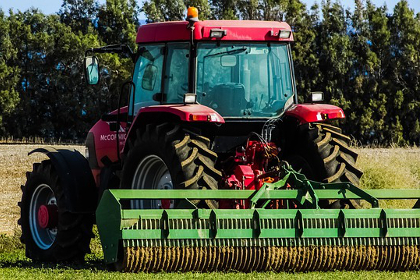
Industrial Farming Threatens Food Security in the US
It is indisputable that we are negatively affecting our air, soil and water in a way that is drastically impacting the earth itself.
If you look down while on an airplane, you can't help but notice the vast exposure of soils into perfectly-carved squares below. These exposed soils are a tragic sign of an unsustainable practice that leads to erosion, runoff pollution while also decreasing soil organic matter and impacting our air quality.
January 10, 2017 | Source: Mercola.com | by Dr. Joseph Mercola
It is indisputable that we are negatively affecting our air, soil and water in a way that is drastically impacting the earth itself.
If you look down while on an airplane, you can't help but notice the vast exposure of soils into perfectly-carved squares below. These exposed soils are a tragic sign of an unsustainable practice that leads to erosion, runoff pollution while also decreasing soil organic matter and impacting our air quality.
Please use my search engine to find previous interviews with experts like Gabe Brown, Joel Salatin, Will Harris or other articles related to regenerative agriculture.
Agriculture has undergone massive changes over the past several decades. Many of them were heralded as progress that would save us from hunger and despair. Yet today, we're faced with a new set of problems, birthed from the very innovations and interventions that were meant to provide us with safety and prosperity.
For decades, food production has been all about efficiency and lowering cost. We now see what this approach has brought us — skyrocketing disease statistics and a faltering ecosystem.
Fortunately, we already know what needs to be done. It's just a matter of implementing the answers on a wider scale. We need farmers to shift over to regenerative practices that stops depleting our soil and fresh water supplies.
Frustratingly, farmers are often held back from making much needed changes by government subsidy programs that favor monocropping and crop insurance rules that dissuade regenerative farming practices.
Will American Farming Create Another Dust Bowl?
The Great Depression of the 1930s was tough for most Americans, but farmers were particularly hard hit. Plowing up the Southern Plains to grow crops turned out to be a massive miscalculation that led to enormous suffering.
Three consecutive droughts (1930 to '31, '33 to '34 and 1936) turned the area into an uninhabitable and unworkable "dust bowl." As the natural winds that cross the Plains picked up the dry soil, dense clouds of dust called "black blizzards" covered the region in an unprecedented years-long "storm."
As noted by bioethicist George Dvorsky in a recent Gizmodo article,1 research2 suggests modern agricultural methods cannot protect us from a repeat of those devastating conditions.
"Researchers Michael Glotter[, Ph.D.,] and Joshua Elliot[, Ph.D.,] from the University of Chicago ran computer simulations to predict the effects of a Dust Bowl-like drought on today's maize, soy and wheat crops.
'We expected to find the system much more resilient because 30 percent of production is now irrigated in the United States, and because we've abandoned corn production in more severely drought-stricken places such as Oklahoma and west Texas,' noted Elliott in a press release.
'But we found the opposite: The system was just as sensitive to drought and heat as it was in the 1930s,'" Dvorsky writes.
Massive Changes Could Decimate Agriculture
Is the U.S. about to face another dust bowl episode? According to simulations, if the U.S. were to experience the same kind of drought as in 1936, we'd lose nearly 40 percent of the commodity crops grown today.
The best-case scenario? If rainfall remained normal, a 4-degree increase would result in the same kind of losses experienced in the 1930s, meaning we'd lose 30 to 40 percent of our crops.
"Given recent predictions3 that parts of the U.S. could soon experience 'megadroughts' lasting for as long as 35 years (yes, you read that correctly), these results should serve as a serious wakeup call," Dvorsky writes.
